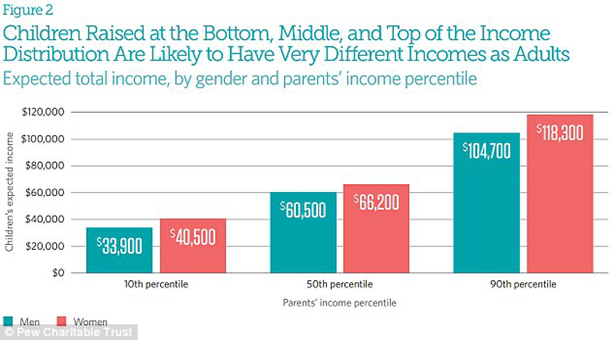In this page you can see a document, which is the product of the cooperation of the three countries, on their education system and the equality of chances it provides.
Authors: Katerina Takou (Greece), Monika Zerec (Croatia), Amélie Maurel (France)

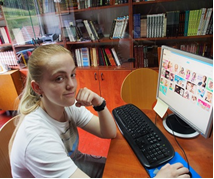
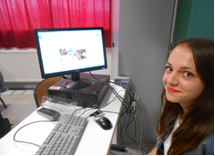
Katerina Monica Amelie
1. Comparison of school system
Greece
In Greece school starts at age of 6 but, before this, a child might spend 2 or 3 years in kindergarten. School is compulsory until the age of 15. In primary schools in Greece, kids spend approximately 960 hours a year meaning 30 hours of classes for 32 weeks. In secondary schools, students spend 1.120 hours in the classroom during a year. In Greece we have 98 days of vacation including 2 months during summer (July and August), 15 days during Christmas (from December 24 to January 7) and another 15 days during Easter (not specified, it depends of the day of Easter).
Most schools are public (over 90%) but there are also private schools throughout Greece. The majority of students goes in a public school. Only a 6% of the total student population goes to a private school (2013). During 2014, in public and private education alike, there were 786.000 students in primary education, 360.000 in secondary and 276.000 in tertiary education level. There are no schools related to church in Greece. The average number of students in a classroom in Greece is 23. The teachers/students ratio is 1 teacher every 12 students. The early leaving from school in 2012 (students who leave school before the compulsory education is over) was 11,4% of the total student population.
CROATIA
In Croatia system education starts in preschool which include those run by local authorities and private nursery schools (legal persons, religious communities, and others), and institutions which provide preschool programmes. Children from 6 and a half year old need to attend compulsory elementary education which lasts 8 years. There also exist education for adults who didn’t manage to complete their elementary education and who are over 15 years old. After they complete their primary education, they can continue to go to optional secondary education which is divided: gymnasiums, art schools, and vocational schools .Gymnasiums provide a comprehensive syllabus which lasts 4 years and includes a final examination, the state matura which is a must if they want to enrol onto college. Programmes in vocational and art schools last from one to five years, and usually end with the production of a final assignment, but it is also possible to sit the state matura if pupils have completed four years of secondary education so there is also a opportunity to continue with their education. Along with secondary education, there are also programmes which prepare people to work in their chosen vocations and adult education programmes too. Elementary and secondary education in state schools is completely free.
Higher education is conducted in higher education institutions through university and professional studies. They are also divided in polytechnics, colleges of applied science, faculties and art academies. All courses were aligned by 2005 with the requirements of the Bologna Process as part of the creation of a European system of higher education. University studies equip students for work in science and higher education, in the business world, public sector and society. University studies are organised and implemented at universities which comprise several faculties, and may be at the level of undergraduate, graduate or postgraduate studies.
Today, there are 90 public and 32 private higher education institutions that are operating in Croatia.
FRANCE
In France, kids start school very early: kids start school at age 2 or 3 and children spend 2 or 3 years in maternelle (kindergarten). School is compulsory until age 16. In primary schools, French kids spend more hours a year than other European countries. Most schools are public (85%) but there are also private schools throughout France (particularly in the very religious regions of Western and Eastern France).
Pupils start lessons at 8am and can finish at 6pm. These are very long school days!
Separation of church and state was decreed in 1905 but Catholic schools continue to coexist alongside public ones.
Education is almost free at all levels except for private schools and business schools. 26% of university students receive scholarships.
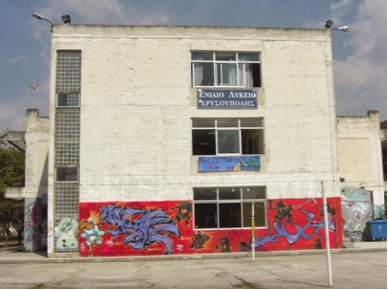
Geniko Lykio Chrissoupolis (Greece): View from outside

Lycée Jean Jaurès, France. A high quality environmentally friendly building.
2. Uniformed curriculum
Greece
During his life in the secondary sector of education system (from the age of 13 to 18), a student is taught about 800 hours of ancient Greek language. Half of these hours are devoted to grammar and syntax. This is not very good, as an 80% of the students did not know what was taught in the course of ancient Greek language in previous years. During the same time, a student is taught about 750 hours mathematics and about 750 hours of science. This division of courses can be easily explained as, in Greece, the educational system should forge the national spirit in every student’s mind. In this context, two courses are considered necessary: the ancient Greek language and the Greek history. Forging the national spirit is more serious objective than knowledge. That’s why Greece hasn’t a very good position in PISA rankings. In 2012, Greek scores were: reading 477 points, maths 453 points, science 467 points (position: 42)
Croatia
In Croatia curriculums are pretty much uniformed for different kinds of secondary schools, (vocational schools, gymnasiums and private ones). Education in our school is pretty much based on everything needed for our future job, but I personally think they aren’t concentrated enough on subjects that are needed for matura, so we are pretty much forced to learn those subject alone with a little help of professors in 4th grade, because we lost most of the subjects after 2nd grade that are on matura and are needed for some colleges based on medicine too. In conclusion, further education should be considered even for us who already have a chance to work right after we finish school, not only for gymnasiums. I’d like to add up that in some schools pupils are also forced to study something they aren’t interested in, and they’re not allowed to choose which subjects they’d like to study. Maybe it is like that because we probably don’t know in elementary schools and even gymnasiums what would we like to do in life, so they are aiming on showing us a big amount of activities and jobs that are existing in the world so we are able to easily decide on our skills and interests after trying everything what do we want to actually do.
France
In France, there is a uniformed curriculum. The “collège unique” is an excellent example of France’s rather dogmatic policies. All the students learn the same subjects everywhere in France. In the 1970s, it was decided that all students in French high schools should be in the same classes whatever their respective levels: all classes must be mixed and must have the same curriculum.
Only in high school can you specialised for the last two years: you can choose between scientific studies, economics studies and literature and language studies.
One very special topic that all students have to take is philosophy. This is a lesson where you learn to think by yourself and reading famous philosophers about various subjects like culture, language, life and death…
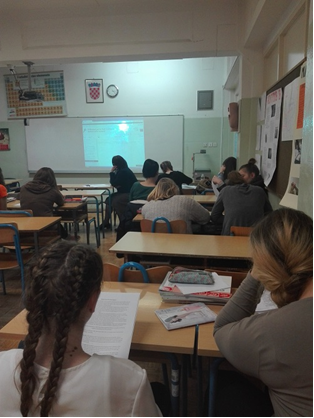
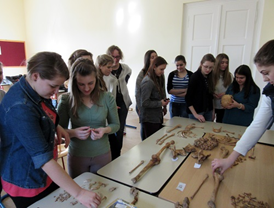
Uniform Curriculum vs. Project Based Learning in the School of Midwifery
3. Equality of chances
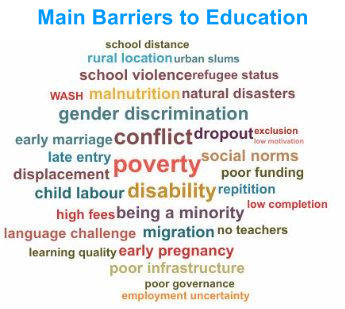
Greece
The issue of equal opportunities that an education system should provide is very important. The concept of "equality of chances" has three different options. The first concerns the initial entry opportunity in the education system. The second relates to the results of the educational process, namely the ability of a student to complete all school levels. Finally, the third option concerns the continuing effects of education and professional employment and, in general, the opportunities of life. Unfortunately in Greece there are many students who can not complete school and are functionally illiterate.
There are three main groups suffering from inequalities in education: Repatriates and foreigners, Roma, Muslims of West Thrace. The main characteristic of these students is that they attend the primary school but they usually don’t continue to the secondary level of education. The main causes of exclusion are poverty, social - ethnic origin and family environment.
Croatia
In Croatia there is a lot of minority ethnic groups like Hungarians, Italians, Czechs, Slovaks, Ukrainians and Ruthenians. The tradition of education in languages of the national minorities has been rooted in the Croatian educational system. Some problems occurred with Serb ethnic groups, mainly because the after war tensions still exists. There are still examples of hesitance at local level to provide pupils from the Serb minority with education in their language (e.g. for the education in the minority language of the Serb minority in Knin), In Vukovar pupils from Serb minority have classes in their language but also they have separate classes from Croatian pupils which doesn’t help integration and tolerance. Same problem of integration into a mainstream educational system can be find in Međimurje when it comes to Roma’s minority who have separate classes and it is a issue of concern.
Also, an issue of great concern is, in this moment 60 refugees pupils who are on the Croatian territory more than six months, and has long been not go to school. In accordance with the Rights of the Child, there is the strong need to be organized some sort of education for these children.
France
In France, the fight against discrimination emerged in the 1980s. Influenced by affirmative action, France adopted positive discrimination as part of the fight against discrimination.There is a policy of integration based on the principle of secularity, the most important concept in French schools. There is no recognition of racial and ethnic categorization.
Many areas with a lower standard of living are organized in ‘priority education zones’, they get special subsidies. But most of the students in those schools don’t have access to the ‘Grandes Ecoles’, the best schools in higher education, so the system doesn’t work so well.
The principle of equality for all doesn’t work because, in fact, some students need a lot more help than others, more time or different approaches.
The French educational system is more unequal in 2012 than before, there are less chances to succeed for disadvantaged pupil. If your parents had a good job and & good income, you will have more chance to also have a good income. So children from moneyed parents are more likely to succeed in their studies and get a well-paid job.
